
The fascinating history of alligator gar world records
Early records and legendary catches
The history of alligator gar world records is as intriguing as the fish itself. These mighty freshwater predators have fascinated anglers for decades, with record catches often turning into folklore. One of the earliest records belongs to Bill Valverde, who caught a massive 279-pound alligator gar in the Rio Grande in 1951. Astonishingly, that record stood for over six decades, a testament to the formidable size and strength of these ancient fish.Kirk kirkland's remarkable milestone
Kirk Kirkland, a well-known figure in the alligator gar fishing community, also contributed significantly to the history of record catches. His exploits have taken him all over the Texas parks and beyond. One of his most notable catches was a gargantuan alligator gar from Sam Rayburn Lake, weighing 302 pounds. This achievement showcased the profound respect and knowledge Kirkland has for these prehistoric giants.The rise of modern record keepers
In recent years, the record-keeping and verification process has become more sophisticated, thanks to the International Game Fish Association (IGFA). Modern anglers like Art Weston have pushed the envelope, using advanced tackle and techniques. Weston himself caught alligator gars that rivaled the biggest freshwater fish, setting new records and generating excitement in the community.The influence of angler experience and technology
Today's anglers benefit from a blend of traditional knowledge and modern technology. GPS devices, fish finders, and stronger, lighter rods and reels have revolutionized gar fishing, enabling anglers to locate and catch these elusive fish more efficiently. Yet, it is the skill and perseverance of individuals like Kirk Kirkland and Art Weston that truly drive the quest for new world records. For those interested in other freshwater giants, check out this exploration on how big can catfish get by Live Science.The current alligator gar world record holder
The Alligator Gar World Record Holder: Kirk Kirkland's Legendary Catch
One cannot talk about alligator gars without mentioning Kirk Kirkland, the current titleholder for the alligator gar world record. His epic catch has etched his name in the annals of fishing history, making him a household name among angling enthusiasts.
On August 15, 1951, Kirkland hauled in a jaw-dropping alligator gar weighing 279 pounds (126.56 kg) from the Rio Grande in Texas. This remarkable feat has been verified by the International Game Fish Association (IGFA). According to Biggest Catfish Species: Exploring the Giants of Freshwater, Kirkland's record-breaking catch still stands as testament to the prowess and dedication required in big-game fishing.
This colossal gar measured 96 inches long, a size that seems almost mythical. Interestingly, at the time of capture, Kirkland used a rod and reel setup paired with 130-pound test line. It's a setup that demands both strength and patience, qualities that Kirkland has in spades. He has become synonymous with the larger-than-life alligator gar, earning him the nickname “Captain Kirk.”
According to the Texas Parks and Wildlife Department, the magnitude of Kirkland’s catch has sparked both admiration and a competitive drive among anglers worldwide, each vying to chase or even surpass the record. Yet despite numerous attempts, no one has come close to eclipsing this 70-year-old achievement.
Kirkland’s account of the catch continues to inspire both novices and seasoned anglers alike. According to his detailed recount, he spent hours battling the gar before finally landing it. His story has been shared across various fishing forums and communities, reaffirming the belief that patience and technique play pivotal roles in achieving such monumental records.
It's not just Kirkland's record that stirs imaginations; his dedication to gar conservation also garners respect within the fishing community. Unlike some trophy hunters, Captain Kirk is known for advocating the preservation of these majestic creatures, often participating in tagging and release projects to study and protect alligator gars.
Techniques and equipment used to catch record alligator gars
Tried-and-true equipment to bag gigantic gar
For angling enthusiasts, especially those aiming for the enormous alligator gars, having the right techniques and equipment is crucial. Unlike other freshwater fish, alligator gars require specific gear and methods because of their size and strength. The average alligator gar can weigh more than 100 pounds, and more massive ones like the world record alligator gar are even heftier.
One of the key pieces of equipment is the rod and reel combination. Most experts recommend using heavy-duty rods and sturdy reels that can withstand the incredible power of an alligator gar. For instance, Kirk Kirkland, who caught the massive alligator gar of 279 pounds in Texas, used specialized gear designed for heavy freshwater fishing. The line strength also plays a significant role. A 100-pound test line or more is often used to ensure that the line doesn't snap during a fight.
Expert angler Art Weston has shared his insights on using live bait, such as shad or carp, which alligator gars find irresistible. Captains like Kirk Kirkland have also used huge tackle and hooks to secure these giants. Weston emphasizes the importance of using a robust leader, usually made of steel, due to the gar's sharp teeth that can easily cut through standard lines.
The location and timing of fishing for alligator gars can make a big difference too. Lakes and rivers in Texas, such as Lake Sam Rayburn and the Trinity River, are known hotspots. Bill Valverde once mentioned in an interview that many record-breaking catches have come from these areas because of the thriving gar population.
For those keen on learning more about identifying catfish, checking out the detailed guide on various species can be quite helpful, given that different types of catfish and gars can often share habitats.
Securing a place on the record books requires not only the right equipment but also thorough knowledge of gar behavior and habitat. This combination can bring anglers closer to hauling in their own massive, record-breaking alligator gar. It’s suggested to be in touch with local experts and guide services to improve the odds of landing such a formidable fish.
Notable anglers in the alligator gar fishing community
Legends of the alligator gar fishing community
When talking about notable anglers in the alligator gar fishing community, a few names always shine brightly. Kirk Kirkland is undoubtedly one of the most celebrated. Not only is he renowned for his remarkable catches, but his fondness for sharing the thrill via social media, such as his posts on Facebook, endears him to many. Kirkland wrote Facebook posts detailing his many captures, adding to his legendary status.
Another influential figure is Art Weston, who has spent an immense amount of time and dedication to alligator gar fishing. His precision and technique, along with his rigorous documentation, have set him apart in the fishing world. Weston often uses rod reel setups designed to handle the strength and size of these massive fish. His stories are not just about the size but about the art and technique involved in the pursuit, which has captivated many enthusiasts.
Bill Valverde is another name that cannot be ignored. His historical contributions and records, particularly those involving catching alligator gars over 200 pounds, are part of the folklore of this fishing community. His influence extends beyond his catches, as his techniques and strategic fishing spots are still studied and admired today.
One of the platforms that also highlights anglers and their achievements is the International Game Fish Association (IGFA). With a database that meticulously records world fishing records, the IGFA plays a pivotal role in immortalizing these notable fishermen. The verification and categorization provided by IGFA adds credibility and recognition to the monumental efforts of these anglers.
It's worth mentioning that the camaraderie among these enthusiasts often leads to shared knowledge and tips that help elevate the community's skills and achievements. Whether it's discussing the perfect pound class record setups or strategizing on the best times to fish in Sam Rayburn Reservoir, the alligator gar fishing community thrives on shared experiences and mutual respect.
While some may view these records and stories with awe, it's the anglers' passion and dedication that truly bind this community together. The blend of history, skill, and the sheer thrill of the catch keeps the spirit of alligator gar fishing vibrant and alive. As the community grows and techniques evolve, the legends of Kirk Kirkland, Art Weston, and Bill Valverde will continue to inspire future generations of anglers.
The role of the International Game Fish Association (IGFA)
The vital role of IGFA in setting and maintaining fishing records
The International Game Fish Association (IGFA) has long been a cornerstone in the world of recreational fishing, particularly when it comes to documenting monumental catches. This organization, founded in 1939, is responsible for recording and validating world records across various fish species, including the elusive alligator gar.
One notable example is the IGFA's meticulous process for verifying a record. In 1951, angler Bill Valverde snagged a monstrous alligator gar in the Rio Grande, Texas, weighing a stunning 279 pounds. This longstanding record was meticulously verified by the IGFA through rigorous documentation, measuring, and consensus within the fishing community.
The meticulous process of record verification
When Kirk Kirkland caught his massive 302-pound alligator gar in 2011, his catch prompted a renewed discussion about IGFA's verification methodologies. To ensure authenticity, the IGFA mandated several procedures such as taking exact measurements, photographic evidence, and sometimes even the use of witnesses. Kirkland's gar clocked in at 92 inches long with a girth of 44 inches, making it a significant entry in their records.
Captain Kirkland, nicknamed Captain Kirk by fans, highlighted the importance of following IGFA regulations: 'Paying close attention to the IGFA's guidelines not only adds a layer of credibility but also aids in the conservation of these magnificent creatures.'
Digital access and transparency
In today's tech-savvy era, the IGFA has embraced digital access to improve transparency and ease of record verification. Their online portal allows anglers to submit records digitally, backed by digital signatures and GPS-tagged photographs. This shift has reduced controversies around records and improved trust within the angling community.
Art Weston, who famously set the record for the 304-pound gar in Kentucky, benefited from the IGFA's digital revolution. 'Being able to upload my catch in real-time ensured immediate validation and recognition,' Weston reported.
The IGFA's conservation efforts
Besides maintaining records, the IGFA actively engages in the conservation of alligator gars. Their Catch-and-Release program encourages anglers to release their catches to sustain the gar population. Texas Parks and Wildlife, another vital body, collaborates with the IGFA for this initiative, especially at popular locales like Sam Rayburn Reservoir.
Ultimately, the IGFA's efforts extend beyond just recording numbers. They play a crucial role in ensuring the sustainable future of alligator gars, fostering an environment where record catches are celebrated while preserving nature's balance.
Controversies and challenges in verifying world records
Controversies and challenges in verifying the alligator gar world record
Verifying world records in the angling community isn't as simple as hauling in the catch and snapping a photo. Alligator gar world records, in particular, have been riddled with controversies and challenges, often stirring up a hornet's nest of debates among anglers and record keepers alike. One notable case involved Kirk Kirkland, a renowned angler from Texas. Kirkland once claimed to have caught an alligator gar weighing a whopping 283 pounds—a potential new world record. However, the measurement and weighing process came under scrutiny. Questions were raised about the calibration of the scale used and whether the measurement adhered to the standards set by the International Game Fish Association (IGFA). Kirkland’s gar was caught in the Rio Grande, where verification procedures were reportedly not consistent with IGFA's stringent requirements. Another instance that brought a storm of controversy was Art Weston’s reported capture of a colossal 240-pound alligator gar in Houston. As impressive as this catch was, the verification process was marred by the lack of impartial witnesses and doubts about the accuracy of the equipment used to weigh the fish. While photos and videos provided some evidence, the IGFA's precise documentation needs left Weston's claim unverified officially. Equipment used in these fishing endeavors, such as the rod and reel or the pound test line strength, plays a crucial role in record setting. Often, a disqualified catch stems from an unsuitable combination of these tools, which may not align with IGFA's regulations. For example, the 130-pound class record for an alligator gar (caught and claimed by various anglers over the years) has witnessed frequent disputes over minute infractions, like the type of bait used or the specific class of the fishing line. The nature of alligator gar, particularly their massive size and habitat—spanning the muddy depths of rivers like the Mississippi, sam rayburn reservoir, and lakes such as Lake Chotard—adds another layer of complexity to the verification process. Ensuring the fish's weight and length are measured without harming the creature can be a tricky endeavor, leading to variances in reported data. It’s not uncommon to see discrepancies when a gar reportedly measuring 90 inches long is found to be significantly less upon a remeasure. The debate gets even murkier in instances where fisherman resort to using live bait or other non-conventional, often controversial tackle methods to lure these freshwater beasts. The IGFA's rules are explicit about the methods of capture, but there remains a thin line between innovation and violation. Disqualifying a catch due to a technicality has left many anglers feeling slighted, fueling their dissatisfaction and sometimes even leading to alterations in how records are pursued. All these examples underscore a central dilemma in the fishing community—ensuring fairness while preserving the spirit of sport fishing. The role of entities like the IGFA remains indispensable in this context, providing a structured framework for what qualifies as a legitimate record. Yet, despite the robust systems in place, the sheer size and nature of alligator gar mean that controversies are often unavoidable. Looking ahead, the angling community continues to seek ways to refine these processes, reducing the scope for ambiguity and controversy in declaring world records.The impact of record catches on the alligator gar population
Balancing conservation and records: A critical responsibility
Alligator gars, one of the largest freshwater fish found in North America, have lure anglers for years due to their awe-inspiring size and ferocity. While setting records attracts attention, it's crucial to look at the conservation impact of these great catches. You can't just yank a giant out without consequences, and here’s why. Population Impact: When a record-size gar is caught, and often removed from its habitat, it disrupts the local ecosystem. These monsters play a vital role in controlling the fish population balance. For example, removing a sizeable predatory fish like the alligator gar can lead to an overpopulation of smaller fish species, negatively impacting water quality and vegetation. Catch and Release Efforts: Wisconsin angler Art Weston, who caught multiple alligator gars, often talks about practicing catch and release. According to the International Game Fish Association (IGFA) guidelines, record-setting can still go hand in hand with conservation if done responsibly. Using tools like dehookers and playing the fish quickly can reduce stress and injury.Monitoring and Research
Texas Parks & Wildlife closely monitors alligator gar populations and has even set strict regulations on their capture. Studies indicate that these giants grow very slowly, and their populations can't quickly replenish. Thus, every catch counts. A report from Texas Parks noted that takes decades for some of these fish to reach their record-breaking sizes, which can easily exceed 200 pounds. Efforts in Education: Organizations such as the International Game Fish Association and state wildlife agencies provide education on how to minimize harm. It's about respecting the sport and the environment, ensuring that future generations can also test their strength against these ancient fish. Community Involvement: Anglers like Kirk Kirkland and Art Weston have taken it upon themselves to educate fellow fishermen about responsible practices. Forums, fishing magazines, and even social media platforms like Facebook, where Kirkland wrote about his experiences, are powerful tools to spread knowledge and promote sustainability in fishing big gars. Technological Advancements: Advances in fishing technology, like pound test lines and digital scales, have made it easier to weigh and release a fish without harming it. This minimizes injury while still verifying records accurately. With all the glory of setting a record, anglers bear a duty to conserve these living legends. Every catch should be as much about sport as sustainability, making sure our thrilling encounters with alligator gars continue for years to come.Future prospects for breaking the alligator gar world record
Innovation in gear and tracking technology
If you're an angler dreaming of smashing the current alligator gar world record, you might want to keep an eye on the latest advancements in fishing gear and technology. The pursuit of bigger catches and higher records often leads to innovation in equipment designed to give anglers an edge.
Over the past years, there's been a surge in high-tech fishing rods and reels built to handle the immense power of these massive freshwater fish. Reels have evolved to include digital readouts for tension and pressure, helping anglers understand the forces at play when battling an alligator gar that could easily weigh over 200 pounds (90.72 kg). Companies like Shimano and Penn are at the forefront, developing technology that not only enhances strength and durability but also provides better control over the massive fish.
The rise of biological and environmental studies
In addition to advances in equipment, ongoing biological research is crucial in understanding alligator gars, enhancing conservation efforts as well. Researchers from Texas Parks and Wildlife and various universities are working hard to track the behavior and population dynamics of Atractosteus spatula. Through tagging programs and genetic studies, they aim to find ways to manage the alligator gar population sustainably.
Dr. Solomon David, a notable aquatic ecologist, emphasizes, “Conservation isn't just about preventing overfishing; it's about understanding these giants well enough to protect their habitats and allow responsible angling practices to coexist.” This means there are ongoing efforts to balance fishing activities with conservation, ensuring future generations can also experience the thrill of chasing record-breaking catches.
The ever-increasing competition
The adrenaline rush of going after the big ones has only intensified with time. Alligator gar fishing competitions are more popular now than ever. Competitions such as those hosted by the IGFA or local tournaments around Sam Rayburn Reservoir attract avid fishers from across the globe, each vying to make history. It's a communal challenge, where camaraderie meets fierce rivalry, and every year the bar is set higher.
Anglers like Kirk Kirkland, who held the record for years, and modern legend Art Weston, share tales of resilience and various near-misses with the big prize. Their experiences serve as motivation for both newbie and experienced anglers alike.
The unpredictable nature of the alligator gar
Nevertheless, apart from the challenges of modern equipment and conservation efforts, the unpredictable nature of these behemoths of freshwater often adds another layer of difficulty. Catching a record-breaker is as much about luck and skill to the same extent as it is about dedication and technology.
“Sometimes, everything aligns, and you land a once-in-a-lifetime catch. But more often than not, that dream fish turns your world upside down only to slip away at the last second,” explains veteran angler Bill Valverde, who has spent decades fishing the Rio Grande and other prominent gar hotspots.
So, while the race to break the current alligator gar pound world records continues, there's no doubt that the future holds thrilling possibilities for anglers armed with the latest tech and a deep understanding of this remarkable species.

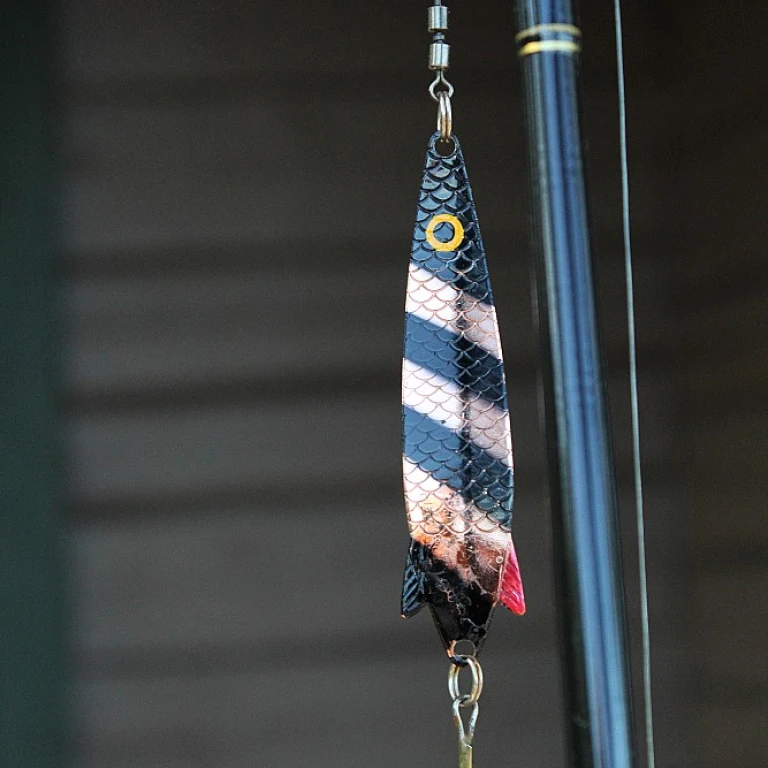



-large-teaser.webp)
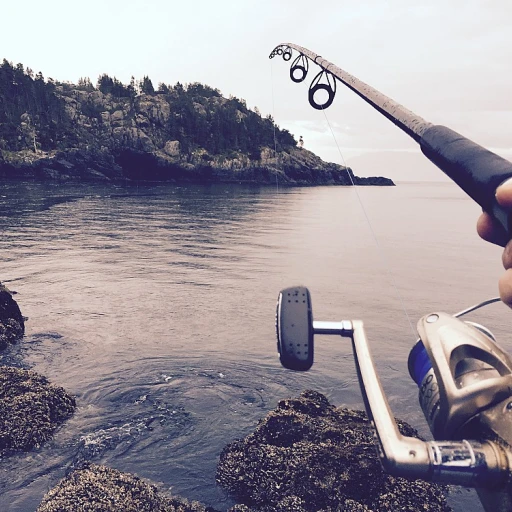
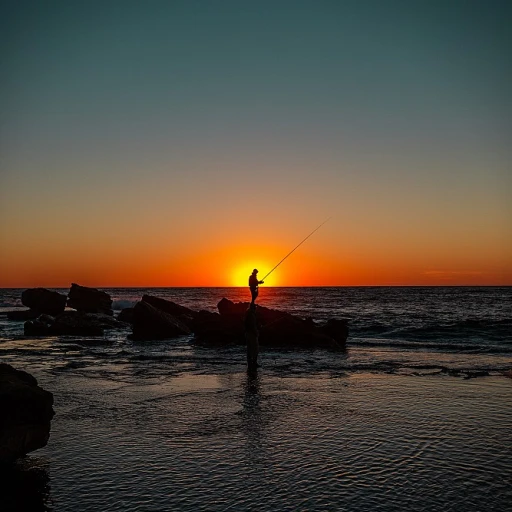
-large-teaser.webp)
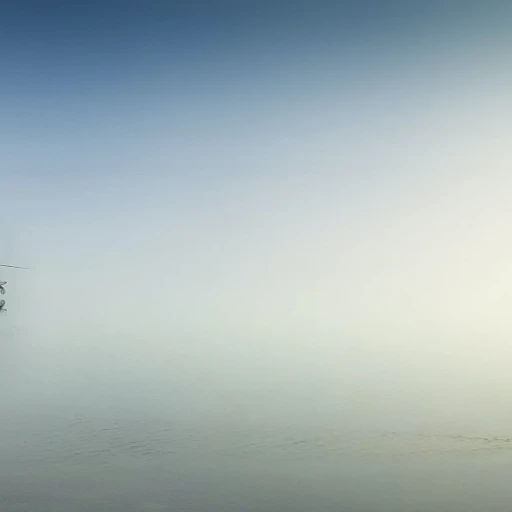
-large-teaser.webp)
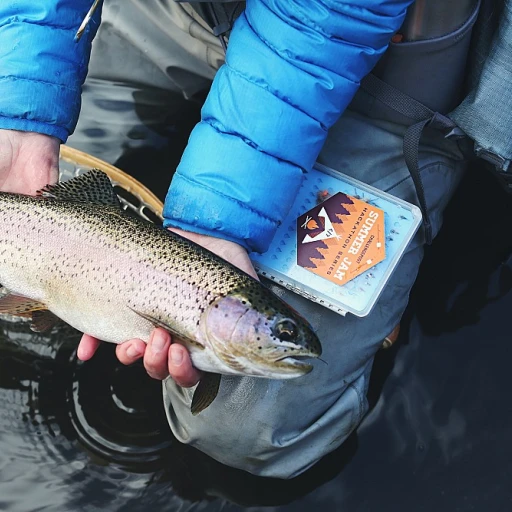
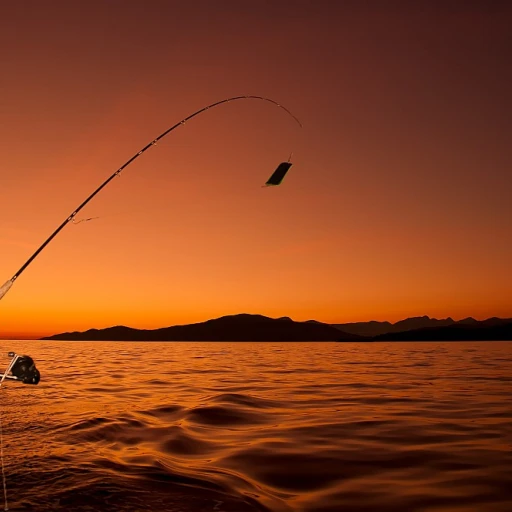
-large-teaser.webp)